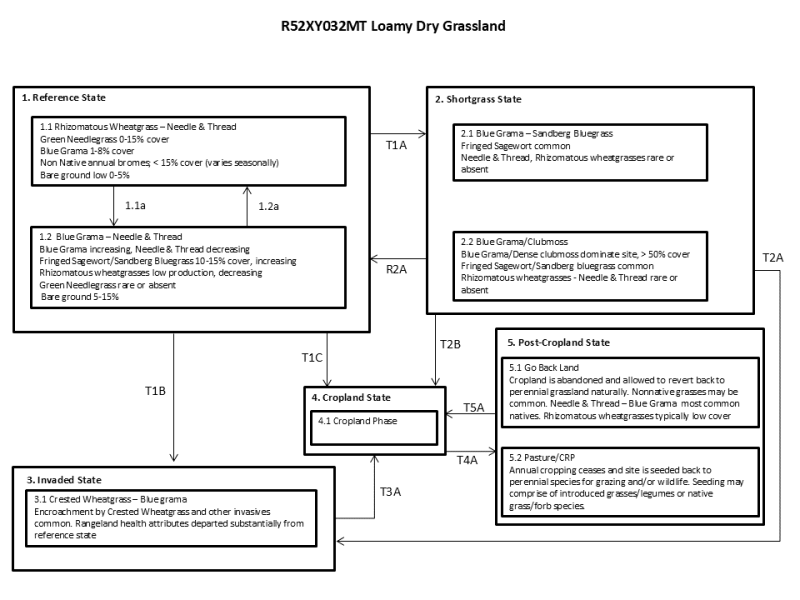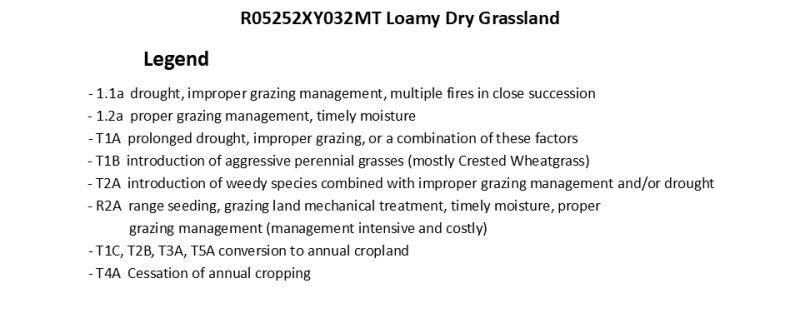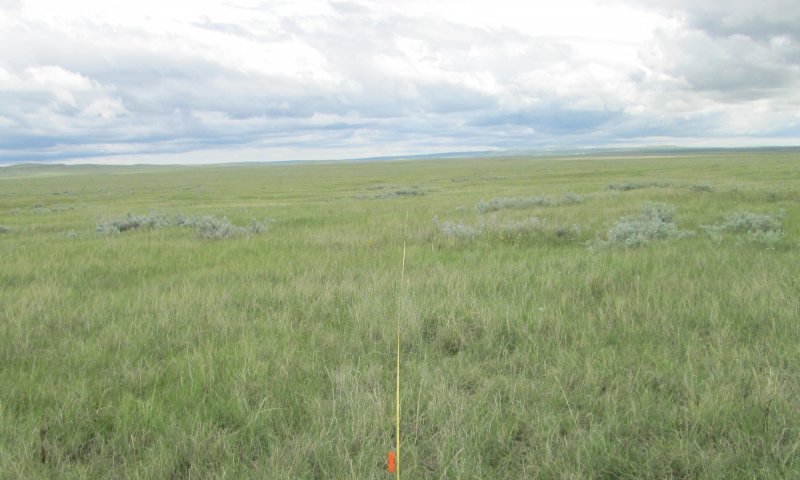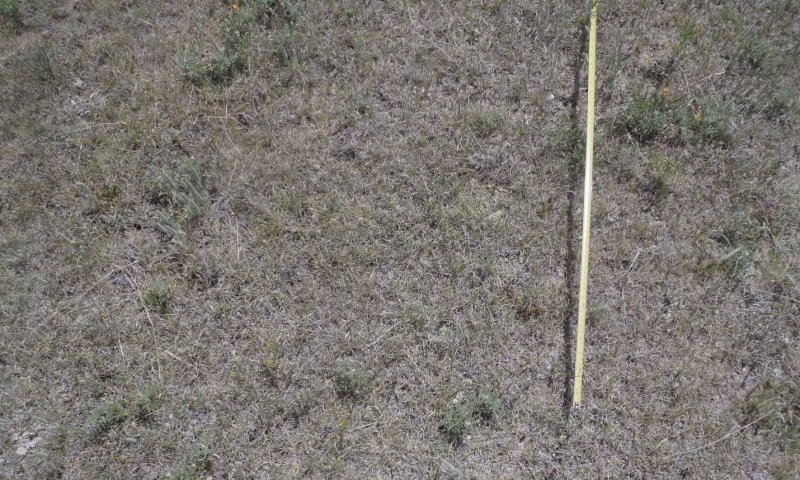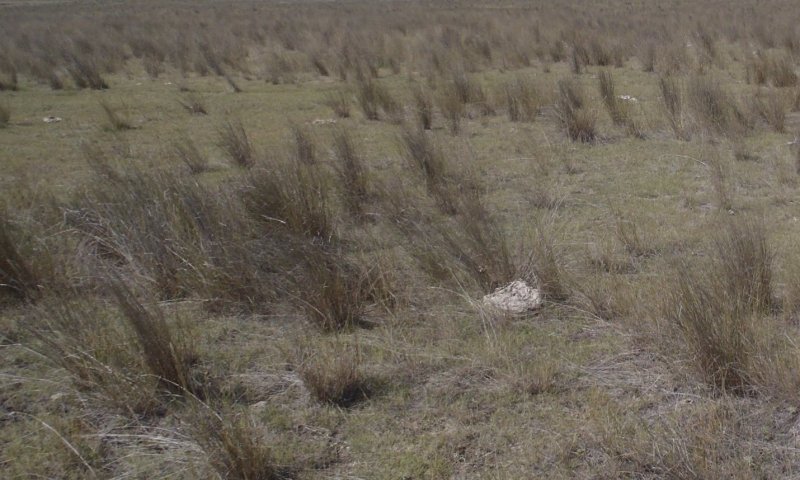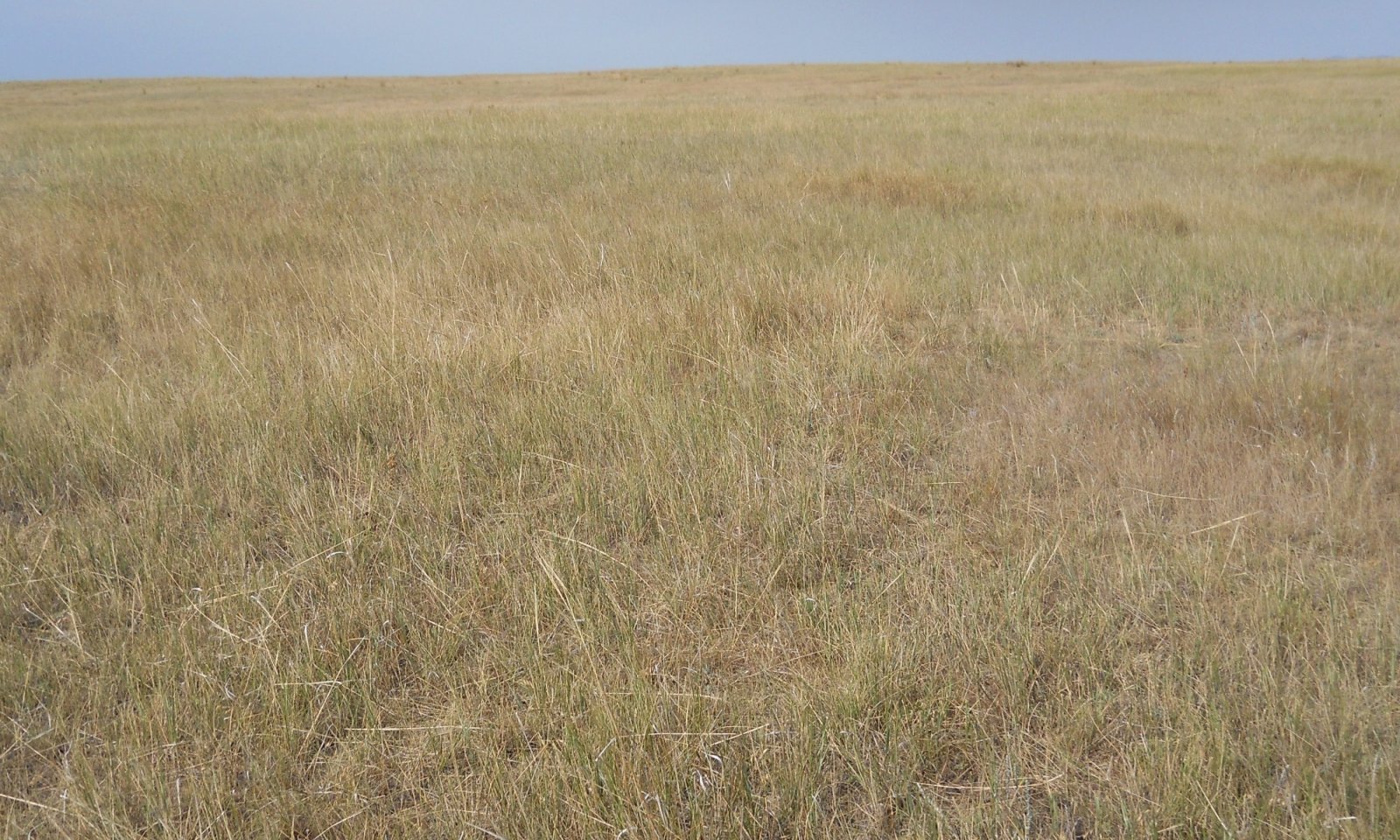

Natural Resources
Conservation Service
Ecological site FX052X01X032
Loamy (Lo) Dry Grassland
Last updated: 5/08/2025
Accessed: 12/21/2025
General information
Provisional. A provisional ecological site description has undergone quality control and quality assurance review. It contains a working state and transition model and enough information to identify the ecological site.
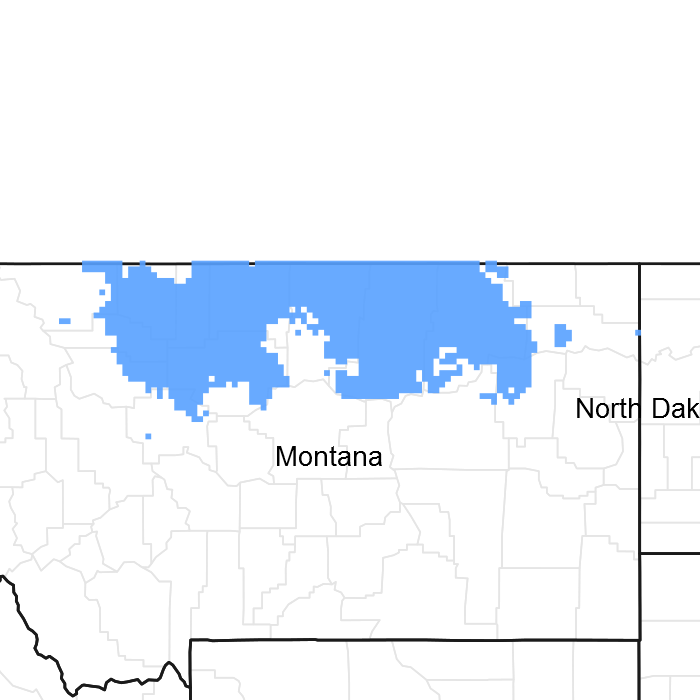
Figure 1. Mapped extent
Areas shown in blue indicate the maximum mapped extent of this ecological site. Other ecological sites likely occur within the highlighted areas. It is also possible for this ecological site to occur outside of highlighted areas if detailed soil survey has not been completed or recently updated.
MLRA notes
Major Land Resource Area (MLRA): 052X–Brown Glaciated Plains
The Brown Glaciated Plains, MLRA 52, is an expansive and agriculturally and ecologically significant area consisting of around 14.5 million acres that stretches across 350 miles from east to west encompassing portions of 15 counties in north-central Montana. This region represents the southwestern limit of the Laurentide Ice Sheet and is considered to be the driest and westernmost area within the vast network of glacially-derived prairie pothole landforms of the northern Great Plains. Elevation ranges from 2,000 feet (610 meters) to 4,600 feet (1,400 meters).
Soils are primarily Mollisols but Entisols, Inceptisols, Alfisols and Vertisols are also common. Till from continental glaciation is the predominant parent material but alluvium and bedrock are also frequently encountered. Till deposits are typically less than 50 feet thick and in some areas, glacially deformed bedrock can be found at or near the soil surface (Soller, 2001). Underlying sedimentary bedrock largely consisting of Cretaceous shale, sandstone and mudstone (Vuke et al., 2007) is commonly exposed on hillslopes, particularly along drainage ways. Significant alluvial deposits occur along glacial outwash channels and major drainages which include portions of the Missouri, Teton, Marias, Milk and Frenchman Rivers. Large glacial lakes, particularly in the western half of the MLRA, deposited clayey and silty lacustrine sediments (Fullerton et al., 2013).
Much of the western portion of this MLRA was glaciated towards the end of the Wisconsin age with the maximum glacial extent occurring approximately 20,000 years ago (Fullerton et al., 2004). The result is a geologically young landscape that is predominantly a level till plain interspersed with lake plains and dominated by soils in the Mollisol and Vertisol orders. These soils are very productive and generally are well-suited to dryland farming. Much of this area is aridic-ustic and crop-fallow dryland wheat farming is the predominant land use with rangeland typically being found on steep hillslopes along drainages.
Rangeland, much of it native mixed grass prairie, increases in abundance in the eastern half of the MLRA. The Wisconsin-age till in the north-central part of this area typically formed large disintegration moraines with steep slopes and numerous poorly-drained potholes. A large portion of Wisconsin-age till found on the type of the level terrain that would typically be optimal for farming has large amounts of less-suitable sodium-affected Natrustalfs. Significant portions of Blaine, Phillips, and Valley Counties were glaciated approximately 150,000 years ago during the Illinoisan age and due to erosion and dissection of the landscape much of these areas have steeper slopes and more exposed bedrock than areas glaciated during Wisconsin age (Fullerton et al., 1986).
While much of the rangeland in the aridic ustic portion of MLRA 52 is classified as belonging to the ‘dry grassland’ climatic zone, sites in portions of southern MLRA 52 may belong to the ‘dry shrubland’ climatic zone. The dry shrubland zone represents the northernmost extent of big sagebrush (Artemisia tridentata) steppe on the Great Plains. As similar soils occur in both southern and northern portions of the MLRA it is currently hypothesized that climate is the primary driving factor affecting big sagebrush distribution in this area but the precise factors have so far proven to be elusive and are for the time of this writing not yet fully understood.
Sizeable tracts of largely unbroken rangeland in the eastern half of the MLRA and adjacent southern Saskatchewan are home to the Northern Montana Population of Greater Sage Grouse (Centrocercus urophasianus) and large portions of this area are considered to be a Priority Area for Conservation (PAC) by the U.S. Fish and Wildlife Service (U.S. Fish and Wildlife Service, 2013). This population is unique among sage grouse populations in the fact that many individuals overwinter in the big sagebrush steppe (dry shrubland) in the southern portion of the MLRA and then migrate to the northern portion of the MLRA which lacks big sagebrush (dry grassland) to spend rest of the year (Smith, 2013).
Areas of the till plain near the Bearpaw and Highwood Mountains as well as the Sweetgrass Hills and Rocky Mountain foothills are at higher elevations and receive higher amounts of precipitation and have a typic-ustic moisture regime. These areas have significantly more rangeland production than the drier aridic-ustic portions of the MLRA and have enough moisture to produce crops annually as opposed to bi-annually in the drier areas. Ecological sites in this higher precipitation area are classified as the moist grassland climatic zone.
Classification relationships
NRCS Soil Geography Hierarchy
Land Resource Region: Northern Great Plains
Major Land Resource Area: 52
Climatic Zone: Dry Grassland
National Hierarchical Framework of Ecological Units (Cleland et al., 1997; Nesser et al., 1997; McNab et al., 2007)
• Domain: Dry
• Division: Temperate Steppe
• Province: Great Plains-Palouse Dry Steppe Province 331
• Section: Northwestern Glaciated Plains 331D
• Subsection: Montana Glaciated Plains 331Dh
• Landtype association/Landtype phase: N/A
National Vegetation Classification Standard (Federal Geographic Data Committee, 2008)
• Class: Mesomorphic Shrub and Herb Vegetation Class (2)
• Subclass: Temperate and Boreal Grassland and Shrubland Subclass (2.B)
• Formation: Temperate Grassland, Meadow, and Shrubland Formation (2.B.2)
• Division: Great Plains Grassland and Shrubland Division (2.b.2.Nb)
• Macrogroup: Hesperostipa comata – Pascopyrum smithii – Festuca hallii Grassland Macrogroup (2.B.2.Nb.2)
• Group: Pascopyrum smithii – Hesperostipa comata – Schizachyrium scoparium – Bouteloua spp. Mixedgrass Prairie Group (2.B.2.Nb.2.c)
• Alliance: Pascopyrum smithii – Nassella viridula Northwestern Great Plains Herbaceous Alliance
• Association: Pascopyrum smithii -Hesperostipa comata Central Mixedgrass Herbaceous Vegetation
EPA Ecoregions
• Level 1: Great Plains (9)
• Level 2: West-Central Semi-Arid Prairies (9.3)
• Level 3: Northwestern Glaciated Plains (42)
• Level 4: North Central Brown Glaciated Plains (42o) and Glaciated Northern Grasslands (42j)
Ecological site concept
The Loamy Dry Grassland site occurs on till plains, hillslopes, outwash fans, alluvial fans, and high stream terraces. This site is characterized by moderately deep to very deep (greater than 20 inches to bedrock) medium textured soils on slopes less than 15 percent. Surface textures are of the fine-loamy or fine silty textural family (less than 35 percent clay) and soils frequently have a mollic epipedon. Calcium carbonate is less than five percent in the surface five inches. The dominant plant community on this site is needle and thread (Hesperostipa comata) and rhizomatous wheatgrasses; primarily western (Pascopyrum smithii) and/or thickspike (Elymus lanceolatus). Other grasses include prairie Junegrass (Koeleria macrantha), blue grama (Bouteloua gracilis), Sandberg bluegrass (Poa secunda) and plains reedgrass (Calamagrostis montanensis). Green needlegrass (Nassella viridula) is present when moisture conditions are made more favorable by soil texture or micro relief. Silver sagebrush is the most common shrub. Figure 1 illustrates the distribution of this ecological site based on current data. This map is approximate, is not intended to be definitive, and may be subject to change. Field verification using the appropriate MLRA key is required for proper identification of this ecological site.
Associated sites
| FX052X01X030 |
Limy (Ly) Dry Grassland Generally, found on crests, shoulders, or summits and where slope shares are convex rather than linear or concave. Soils contain 5% or greater CaCO3 in the surface 5 inches (evidenced by strong or violet effervescence). |
|---|---|
| FX052X01X040 |
Loamy-Steep (Lostp) Dry Grassland Occurs on steeper slopes (15 percent or greater) adjacent to the Loamy site. Soils are similar to the Loamy site. |
| FX052X01X006 |
Claypan (Cp) Dry Grassland Occupies similar landscapes to the Loamy site. In the natric soils complex Claypan is found in mid-level micro topography whereas Loamy occupies higher positions. |
| FX052X01X062 |
Swale (Se) Dry Grassland Generally found downslope from the loamy site in swales and drainageways. Receives additional moisture from surface water run in. Soils are greater than 20 inches deep and mollic or pachic with higher available water holding capacity. |
Similar sites
| FX052X01X030 |
Limy (Ly) Dry Grassland Differs from Loamy Dry Grassland in that’ soils contain 5 percent or greater CaCO3 in the surface 5 inches (evidenced by strong or violet effervescence). |
|---|---|
| FX052X01X110 |
Sandy (Sy) Dry Grassland Differs from Loamy Dry Grassland in that soils are a Coarse-Loamy textural family in the surface 4 inches as opposed to Fine-Loamy. |
| FX052X01X006 |
Claypan (Cp) Dry Grassland Differs from Loamy Dry Grassland in that soils contain an abrupt root-restrictive clay layer within 10 inches of the soil surface. |
| FX052X03X032 |
Loamy (Lo) Dry Shrubland Differs from Loamy Dry Grassland in that annual temperatures are slightly warmer and site supports big sagebrush rather than silver sagebrush. |
| FX052X01X001 |
Clayey (Cy) Dry Grassland Differs from Loamy Dry Grassland in that soils contain greater than 35 percent clay in the surface 4 inches. |
Table 1. Dominant plant species
| Tree |
Not specified |
|---|---|
| Shrub |
Not specified |
| Herbaceous |
(1) Pascopyrum smithii |
Legacy ID
R052XY032MT
Click on box and path labels to scroll to the respective text.
Ecosystem states
| T1A | - | prolonged drought, improper grazing, or a combination of these factors |
|---|---|---|
| T1B | - | introduction of aggressive perennial grasses (mostly Crested Wheatgrass) |
| T1C | - | conversion to annual cropland |
| R2A | - | range seeding, grazing land mechanical treatment, timely moisture, proper grazing management (management intensive and costly) |
| T2A | - | introduction of weedy species combined with improper grazing management and/or drought |
| T2B | - | conversion to annual cropland |
| T3A | - | conversion to annual cropland |
| T4A | - | Cessation of annual cropping |
| T5A | - | conversion to annual cropland |
State 1 submodel, plant communities
| 1.1A | - | drought, improper grazing management, multiple fires in close succession |
|---|---|---|
| 1.2A | - | proper grazing management, timely moisture |


